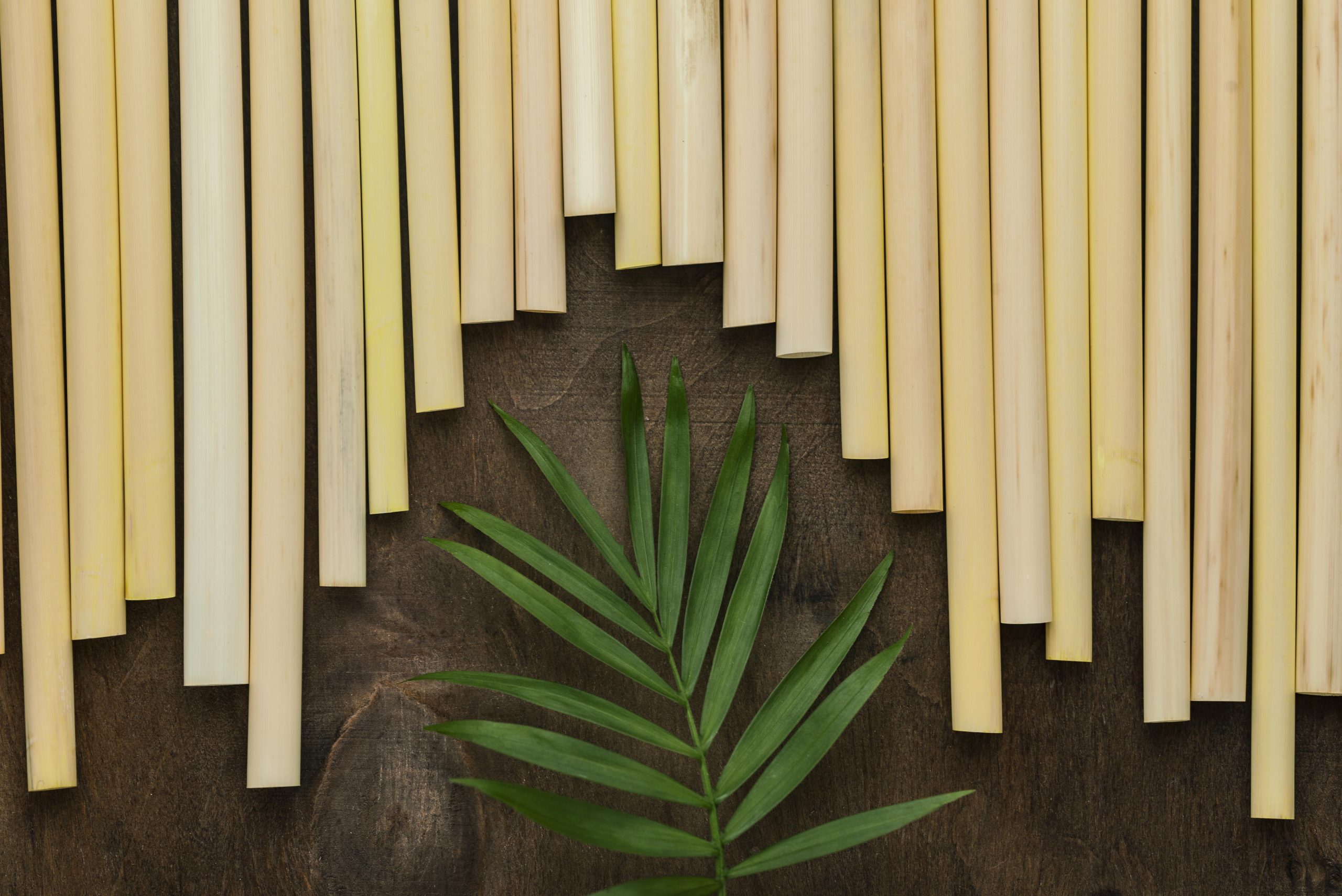Introduction
In today’s rapidly evolving world, sustainability is no longer just a trend—it’s a necessity. As more homeowners and builders look for ways to reduce their environmental impact, eco-friendly flooring materials have become a key element in sustainable home design. This article, produced by the research and development unit of LastingOak, delves into green flooring solutions and recycled flooring options, offering practical insights into how you can make sustainable choices for every room in your home. From renewable materials to innovative recycling practices, we explore how eco-conscious flooring can enhance both the aesthetics and environmental footprint of your living space.

The Most Common Eco-Friendly Flooring Materials
Eco-friendly flooring materials have seen significant growth in popularity as sustainability becomes more of a focus in home design. Some of the most commonly available materials include bamboo, cork, reclaimed wood, and linoleum. Each of these materials provides unique benefits, such as being renewable, low-maintenance, or biodegradable. Eco-friendly flooring materials like bamboo are particularly sought after due to their fast growth and minimal environmental impact.
Benefits of Recycled Flooring Options
Recycled flooring options, such as reclaimed wood, recycled rubber, and recycled tiles, offer significant environmental benefits by reducing the demand for new raw materials and keeping waste out of landfills. In terms of cost-effectiveness, recycled materials are often cheaper than their newly-manufactured counterparts. By opting for recycled flooring options, homeowners can achieve the same high-quality look and feel at a lower cost while reducing their carbon footprint.
Best Eco-Friendly Flooring Materials for High-Traffic Areas
1. Bamboo Flooring
- Durability: Bamboo is harder than most hardwoods, making it an excellent choice for high-traffic areas. It’s known for its strength and ability to withstand heavy use.
- Sustainability: Bamboo is a rapidly renewable resource, growing much faster than hardwood trees. It’s an eco-friendly alternative to traditional wood flooring.
- Bonus: Bamboo is also resistant to moisture, making it ideal for areas like kitchens and entryways.
2. Cork Flooring
- Durability: Cork has natural resilience, which makes it a durable option for high-traffic areas. It can compress and bounce back from pressure, making it less likely to show wear over time.
- Sustainability: Cork is harvested from the bark of cork oak trees without harming the tree, which allows for sustainable harvesting practices. It’s also biodegradable at the end of its lifecycle.
- Bonus: Cork offers natural insulation and sound absorption, making it great for reducing noise in busy areas.
3. Recycled Rubber Flooring
- Durability: Recycled rubber is incredibly durable and resistant to wear and tear. It can handle heavy foot traffic without showing signs of damage and is slip-resistant, making it perfect for busy households or commercial spaces.
- Sustainability: Made from recycled tires and other rubber products, it repurposes materials that would otherwise end up in landfills.
- Bonus: Rubber flooring is low-maintenance, easy to clean, and available in various styles, making it both practical and aesthetically versatile.
4. Reclaimed Wood Flooring
- Durability: Reclaimed wood, sourced from old buildings and barns, is often denser and harder than new wood, making it a durable choice for high-traffic areas. Its unique weathered look also hides wear and tear better than new wood.
- Sustainability: By reusing existing materials, reclaimed wood reduces the demand for newly harvested trees, making it a sustainable option. It also gives old wood a second life, minimizing waste.
- Bonus: Each piece of reclaimed wood has its own history and character, adding a unique, rustic aesthetic to your space.
5. Linoleum Flooring
- Durability: Natural linoleum is known for its longevity and resilience, making it ideal for high-traffic areas. It resists scratches and dents, and with proper care, it can last for decades.
- Sustainability: Made from renewable resources like linseed oil, cork dust, and wood flour, linoleum is biodegradable and environmentally friendly.
- Bonus: Linoleum is naturally antimicrobial, which makes it a healthy option for homes, particularly in high-traffic areas like kitchens and hallways.
6. Stone Tiles
- Durability: Natural stone, such as granite or slate, is extremely durable and can withstand heavy use in high-traffic areas like entryways and living rooms.
- Sustainability: Stone is a natural material, and when sourced responsibly, it can be a sustainable choice for flooring. However, ensure that the stone is quarried using environmentally conscious practices.
- Bonus: Stone flooring is timeless and offers a luxurious appearance while being easy to maintain.
The Role of Flooring in Sustainable Home Renovation Projects
Flooring is a critical component of any home renovation project, and choosing eco-friendly flooring materials can significantly reduce the environmental impact of a build. By selecting sustainable and renewable materials, builders can lower the energy required for production and transportation. Additionally, recycled flooring materials minimize the use of virgin resources, contributing to an overall greener renovation project.
Certifications Ensuring Eco-Friendly Flooring Materials
Several certifications exist to ensure that flooring materials meet environmental standards. For example, eco-friendly flooring materials can be certified by organizations such as the Forest Stewardship Council (FSC) for wood products, or the Cradle to Cradle certification, which assesses the material’s impact on human and environmental health. LEED (Leadership in Energy and Environmental Design) certification also rewards the use of sustainable building materials, including flooring.
Impact of Eco-Friendly Flooring on Indoor Air Quality and Health
Many conventional flooring materials release volatile organic compounds (VOCs) into the air, which can negatively affect indoor air quality. In contrast, eco-friendly flooring materials such as cork, bamboo, and natural linoleum are free from harmful chemicals and adhesives, improving indoor air quality and contributing to a healthier home environment. This makes them ideal for allergy sufferers and eco-conscious homeowners alike.
Assessing the Lifecycle Environmental Impact of Flooring
To evaluate the lifecycle environmental impact of flooring options, consumers should consider factors such as the raw materials used, energy consumption during production, transportation emissions, and the material’s durability and recyclability. Tools like Environmental Product Declarations (EPDs) can provide detailed information on the sustainability of different eco-friendly flooring materials. Additionally, looking for certifications like Cradle to Cradle or FSC ensures that the material adheres to sustainable practices.
Conclusion
As the demand for environmentally responsible home renovations grows, eco-friendly flooring materials have become an essential part of sustainable building practices. These materials, including bamboo, cork, and recycled wood, offer not only aesthetic appeal but also reduce the environmental impact of construction and renovation projects. The research and development unit at LastingOak has carefully examined various green flooring solutions, concluding that the benefits of choosing eco-friendly flooring materials extend far beyond their appearance.
By opting for recycled flooring options, homeowners can contribute to the reduction of waste while enjoying cost-effective, durable, and stylish floors. Moreover, these materials promote better indoor air quality and health, thanks to their non-toxic nature. From high-traffic areas to complete home renovations, eco-conscious flooring choices are a sustainable solution for any room in the house.
As the industry continues to evolve, the need for sustainable flooring options will only increase. At LastingOak, we are committed to helping our clients make informed choices that benefit not only their homes but also the planet.
Common Questions and Answers for the Website
- What are the most sustainable flooring options for a home?
- The most sustainable options include bamboo, cork, reclaimed wood, and linoleum. These eco-friendly flooring materials are renewable and have a lower environmental impact compared to traditional flooring.
- Are eco-friendly flooring materials durable?
- Yes, many green flooring solutions such as bamboo and cork are highly durable and suitable for high-traffic areas. Recycled rubber and reclaimed wood also offer excellent resilience.
- What are the benefits of using recycled flooring options?
- Recycled flooring options reduce waste, lower the demand for new materials, and are often more cost-effective. They also help minimize the carbon footprint associated with manufacturing new products.
- How can I ensure the flooring material I choose is eco-friendly?
- Look for certifications such as Forest Stewardship Council (FSC) or Cradle to Cradle, which ensure that the flooring material meets environmental standards. Eco-friendly flooring materials with these certifications have been verified for sustainability.
- Do eco-friendly flooring materials improve indoor air quality?
- Yes, many eco-friendly flooring materials like cork, bamboo, and natural linoleum are free from harmful chemicals, leading to improved indoor air quality and healthier living environments.
- Are eco-friendly flooring materials more expensive than traditional options?
- While some eco-friendly materials may have a higher upfront cost, many recycled flooring options and sustainable materials offer long-term cost savings due to their durability and lower maintenance requirements.
- Can eco-friendly flooring materials be used in commercial spaces?
- Absolutely. Many green flooring solutions are highly durable and suitable for commercial use, offering a sustainable and stylish solution for high-traffic environments.
- What certifications should I look for when choosing eco-friendly flooring materials?
- Look for certifications such as LEED, Forest Stewardship Council (FSC), and Cradle to Cradle, which ensure that the materials are sustainable and environmentally friendly.

